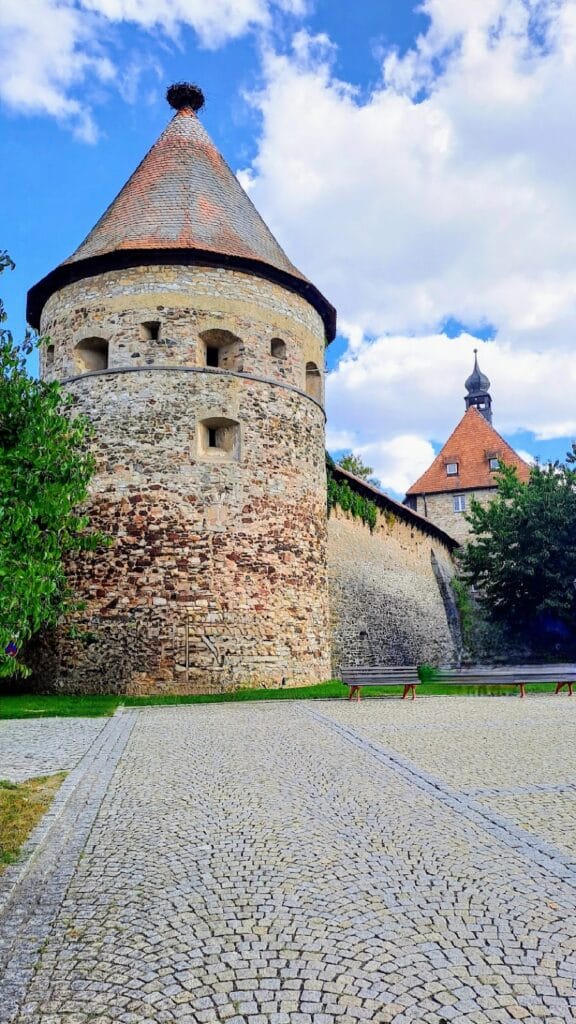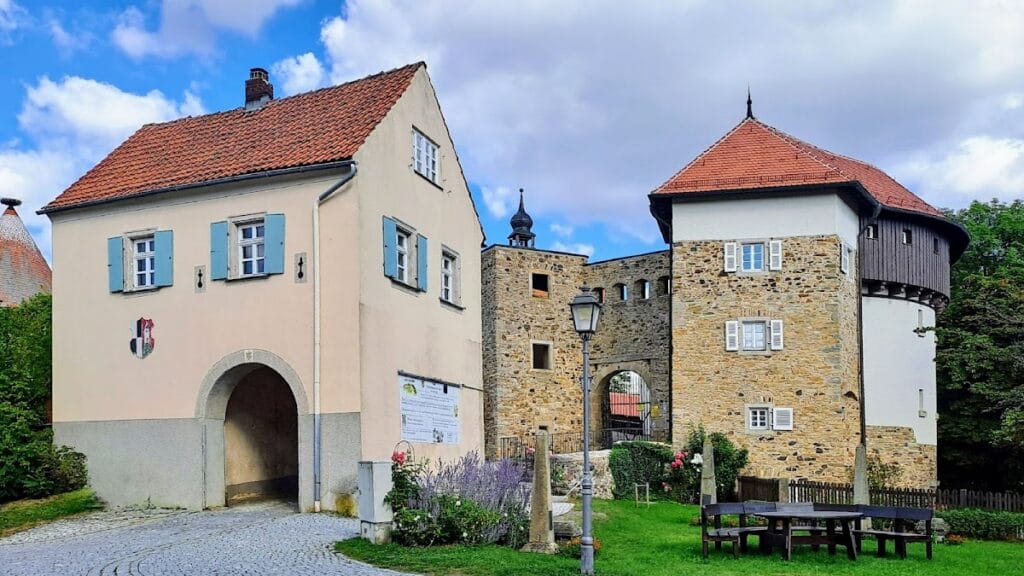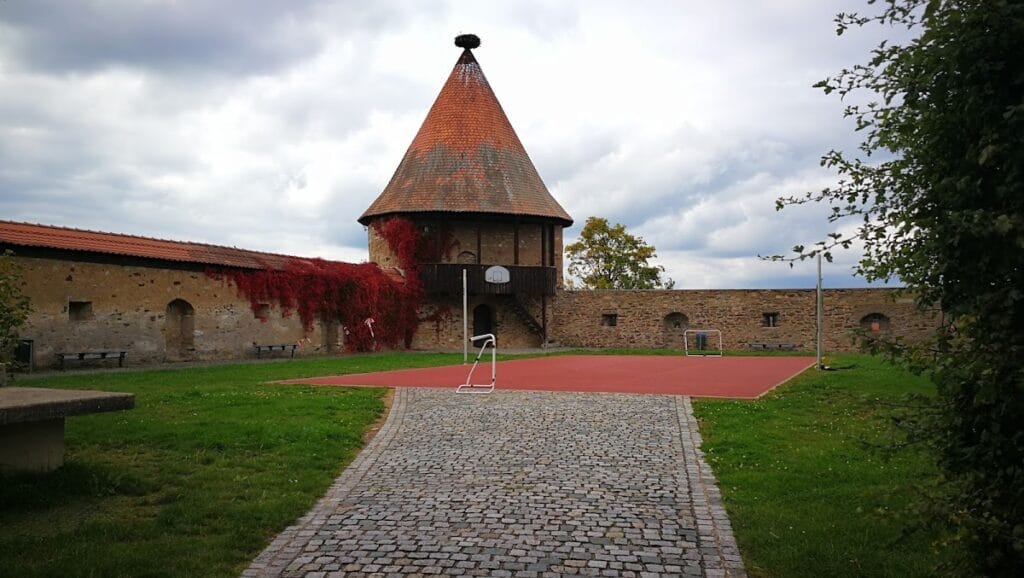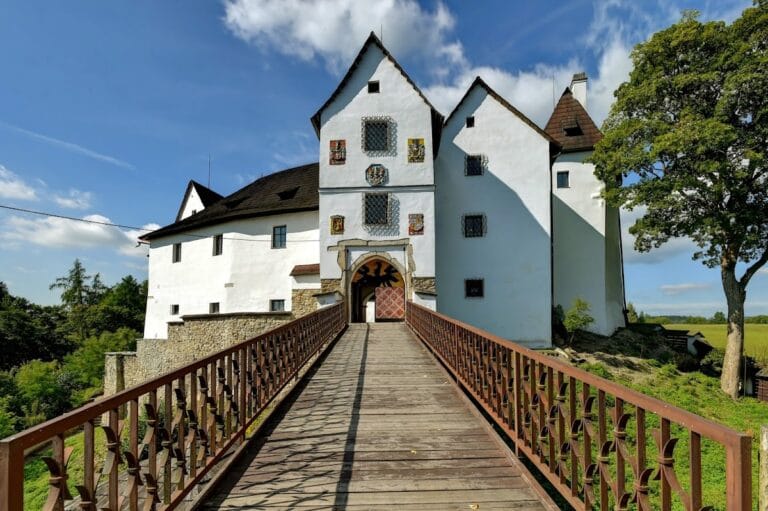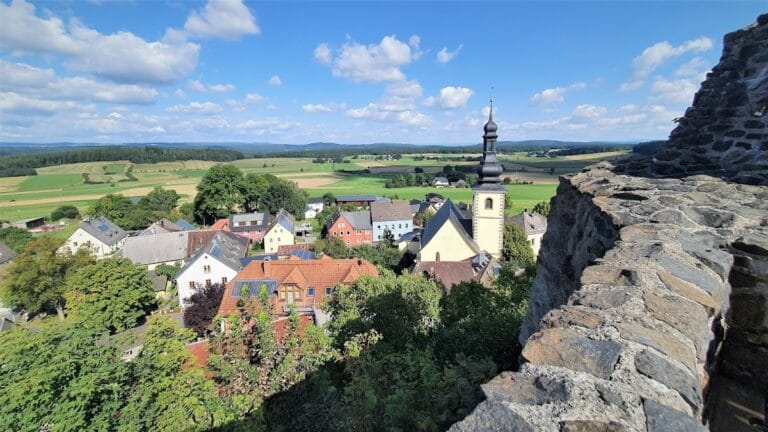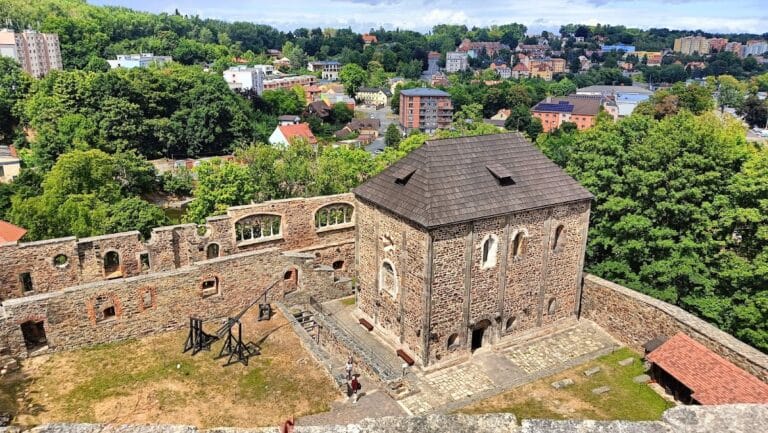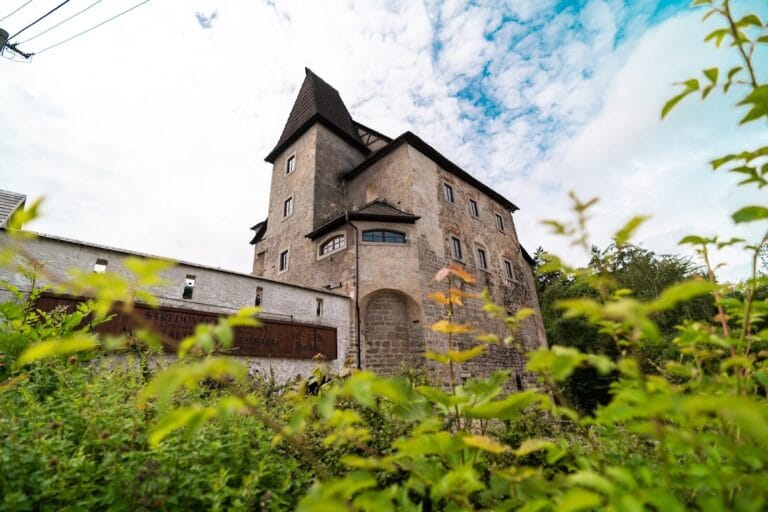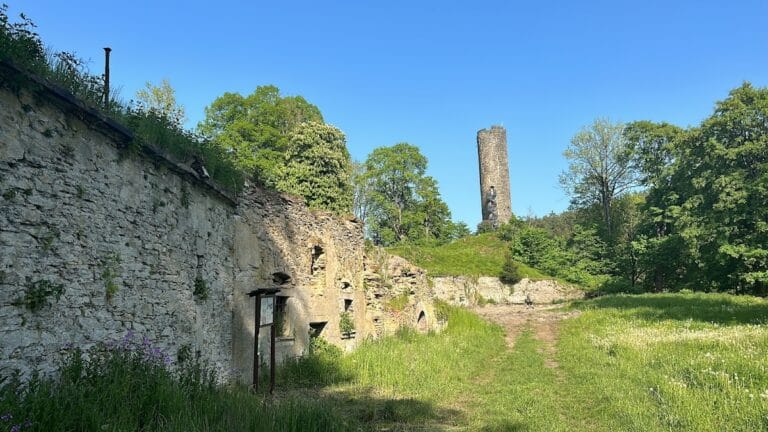Burg Hohenberg: A Historic Hilltop Fortress in Germany
Visitor Information
Google Rating: 4.2
Popularity: Low
Google Maps: View on Google Maps
Official Website: www.facebook.com
Country: Germany
Civilization: Medieval European
Remains: Military
History
Burg Hohenberg an der Eger stands within the modern municipality of Hohenberg an der Eger in Germany. This hilltop fortress was constructed by the Staufer dynasty between the late 12th and early 13th centuries, taking advantage of its strategic position overlooking the Eger River and controlling access through the vital Schirnding Pass, which linked the Fichtelgebirge plateau with the Eger basin and the neighboring Bohemian lands.
The castle first appears in written records in 1222, when Berchtoldus de Honberg, a member of the noble von Hohenberg family, was noted as a witness. Around the turn of the 14th century, the fortress shifted into the hands of the Burgraves of Nuremberg, key figures who sought to strengthen their influence across the Egerland region. The first known official representing the burgrave’s authority at the castle was Rüdiger von Sparneck, mentioned in 1341. During the turbulent period of the Hussite Wars in the early 15th century, the castle played a defensive role, notably in 1433 when Hans von Kotzau successfully held it against Hussite attacks.
The mid-15th century brought further conflict. In 1462, amidst the Bavarian War, a local servant named Haußner set fire to one of the castle’s towers during an incursion by Bohemian forces. Following this event, the fortifications saw significant rebuilding and enhancement around 1480, when major sections including the ring wall and several round towers were constructed. Additional outer defensive work, including a bailey or courtyard enclosed by walls, was completed by the early 16th century.
In the years 1621 and 1622, during the early stages of the Thirty Years’ War, Markgraf Christian augmented the castle’s defenses by adding seven earthworks arranged as bastions along with wooden palisades. Despite these efforts, imperial forces overcame the position in 1632, seizing control of the fortress and occupying it for three years after taking the nearby Schirnding Pass.
After the war, Burg Hohenberg gradually declined in military importance. In 1666, Markgraf Christian Ernst repurposed part of the castle by constructing the Fürstenhaus, a residence and administrative building intended for use as a hunting lodge and local governance center. Around this time, the castle maintained a special status as an imperial free sanctuary, a designation that persisted until 1799 and was symbolized by four stone pillars placed at the town’s entrances.
Political changes through the late 18th and early 19th centuries saw the castle and town pass from the Margraviate of Ansbach-Bayreuth to the Kingdom of Prussia in 1791. The area endured French occupation before finally becoming part of Bavaria in 1810. In the 20th century, beginning in 1936, the castle came under the ownership of the National Socialist Teachers’ League and was converted into a rural school home. During the final months of World War II, American artillery bombardments destroyed key sections of the complex, including the outer bailey, gate tower, and the so-called Stork Tower, amid fighting against SS defenders.
Restoration efforts started in 1951 under Bavarian state direction. From 1955 until 2014, the site operated as a youth hostel and educational center managed by the Sudetendeutsches Sozial- und Bildungswerk foundation. Since 2015, management passed to the VEZ e.V. / Learning Campus organization, which has overseen ongoing renovations aimed at restoring the castle’s function as a venue for youth accommodation and conferences.
Remains
Burg Hohenberg is perched on a rocky promontory about 125 meters above the Eger River, adjacent to the town center of Hohenberg an der Eger. Its layout is defined by a roughly hexagonal ring wall dating from around 1480, which encloses the main castle grounds and incorporates several defensive towers. This irregular six-sided fortification is strengthened at its corners by a gatehouse, three round artillery towers designed to resist cannon fire, and a square prison tower. Notably, a fourth circular tower that once formed part of the defenses was lost during the 19th century.
Inside the castle walls, medieval structures have not survived. Instead, the most prominent building is the Fürstenhaus, erected in 1666 by Markgraf Christian Ernst as a combined hunting residence and administrative seat. This building complex includes an attached kitchen wing and a dwelling intended for the castle steward, reflecting its later civil use rather than military function.
Other auxiliary constructions, such as a granary and a cattle house which once supported the castle’s operation, were demolished in the 1800s. To the south of the ring wall lie remnants of the early 17th-century earthworks installed by Markgraf Christian, originally featuring seven bastioned ramparts with wooden palisades for fortified defense. Today, these earthworks survive only in part, allowing a glimpse into the castle’s early modern fortification system.
A wooden pavilion known as the Königsruhe once stood on the southeastern bastion of the earthworks until 1959. This structure commemorated Queen Theresia of Bavaria’s visit in 1847. After its removal, the site became a campfire area connected to the youth hostel, but the once-clear panoramic views of the surrounding Egerland region have since been obscured by natural overgrowth.
Within the castle courtyard, four stone pillars remain, marking the historic boundaries of the imperial free sanctuary status that the castle and town held until the end of the 18th century. These boundary markers symbolize the legal privileges granted during that period.
The castle endured significant destruction during World War II, with American artillery destroying the outer bailey walls, the gate tower, and a structure known as the Stork Tower. Reconstruction has since stabilized and restored various parts of the site, allowing the surviving elements to convey the layered history of Burg Hohenberg.
